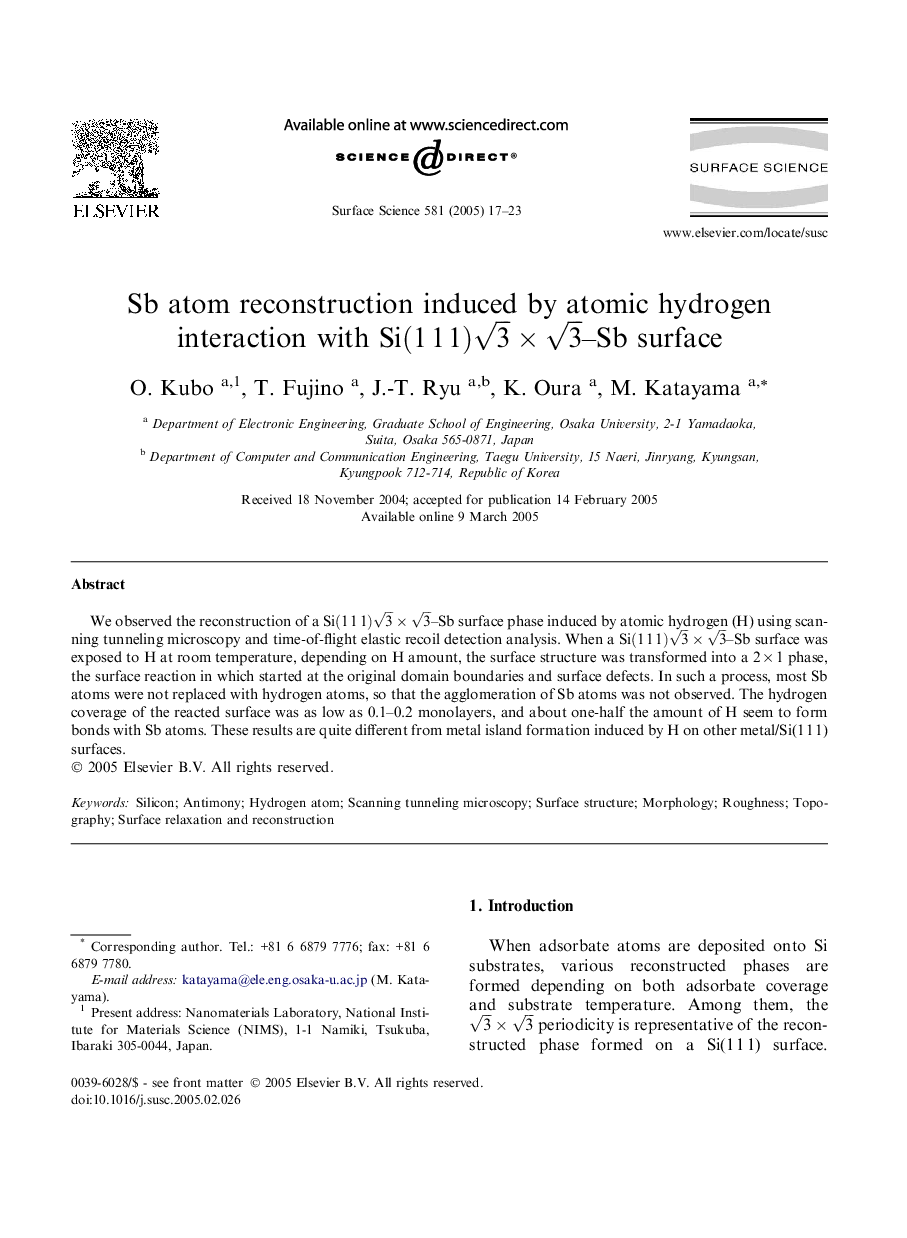| Article ID | Journal | Published Year | Pages | File Type |
|---|---|---|---|---|
| 9595564 | Surface Science | 2005 | 7 Pages |
Abstract
We observed the reconstruction of a Si(111)3Ã3-Sb surface phase induced by atomic hydrogen (H) using scanning tunneling microscopy and time-of-flight elastic recoil detection analysis. When a Si(111)3Ã3-Sb surface was exposed to H at room temperature, depending on H amount, the surface structure was transformed into a 2Â ÃÂ 1 phase, the surface reaction in which started at the original domain boundaries and surface defects. In such a process, most Sb atoms were not replaced with hydrogen atoms, so that the agglomeration of Sb atoms was not observed. The hydrogen coverage of the reacted surface was as low as 0.1-0.2 monolayers, and about one-half the amount of H seem to form bonds with Sb atoms. These results are quite different from metal island formation induced by H on other metal/Si(1Â 1Â 1) surfaces.
Keywords
Related Topics
Physical Sciences and Engineering
Chemistry
Physical and Theoretical Chemistry
Authors
O. Kubo, T. Fujino, J.-T. Ryu, K. Oura, M. Katayama,
